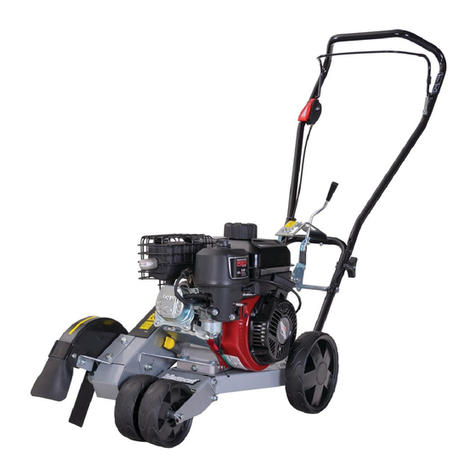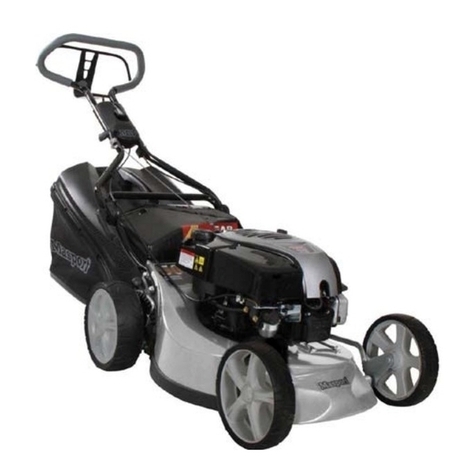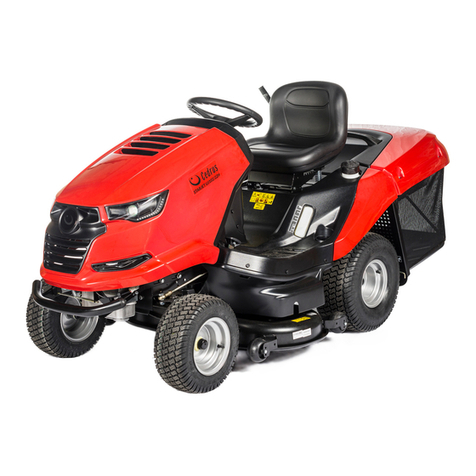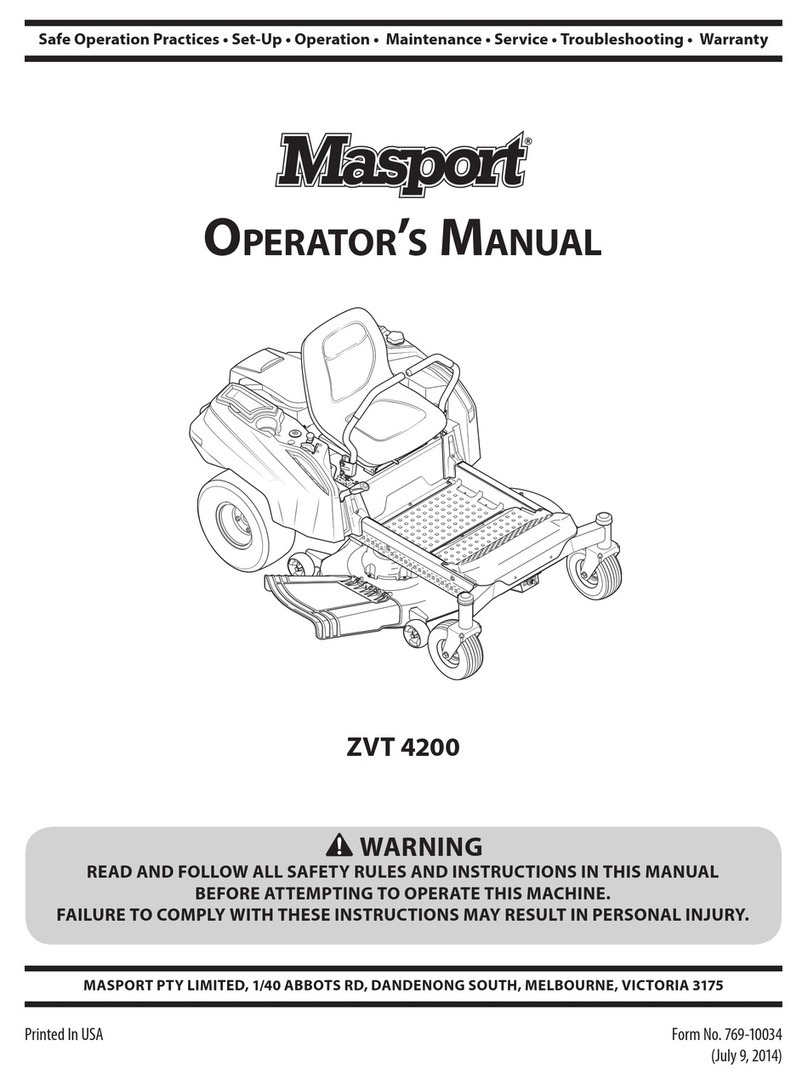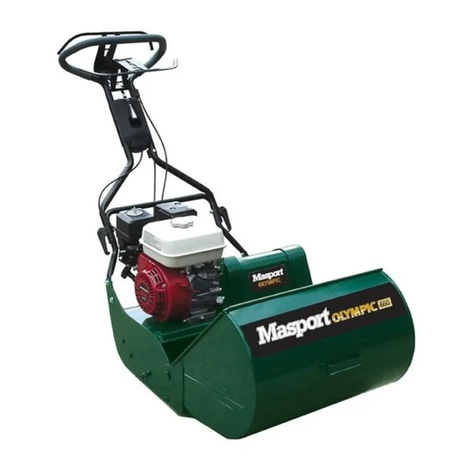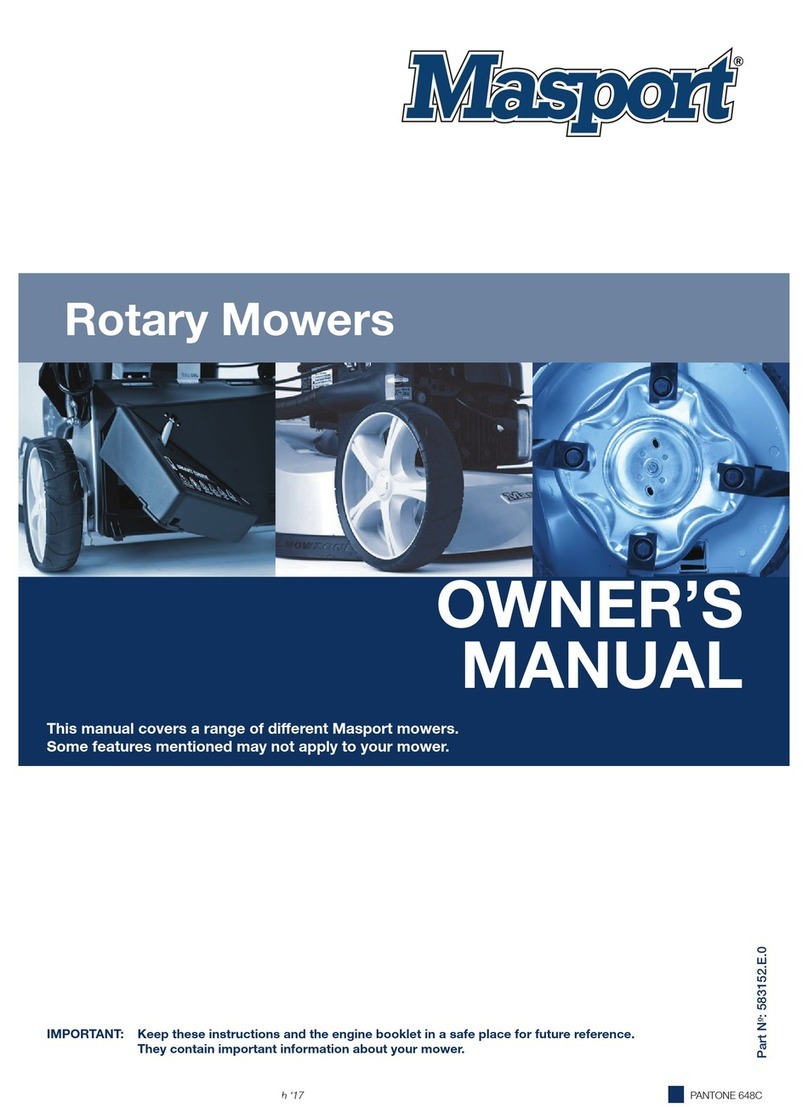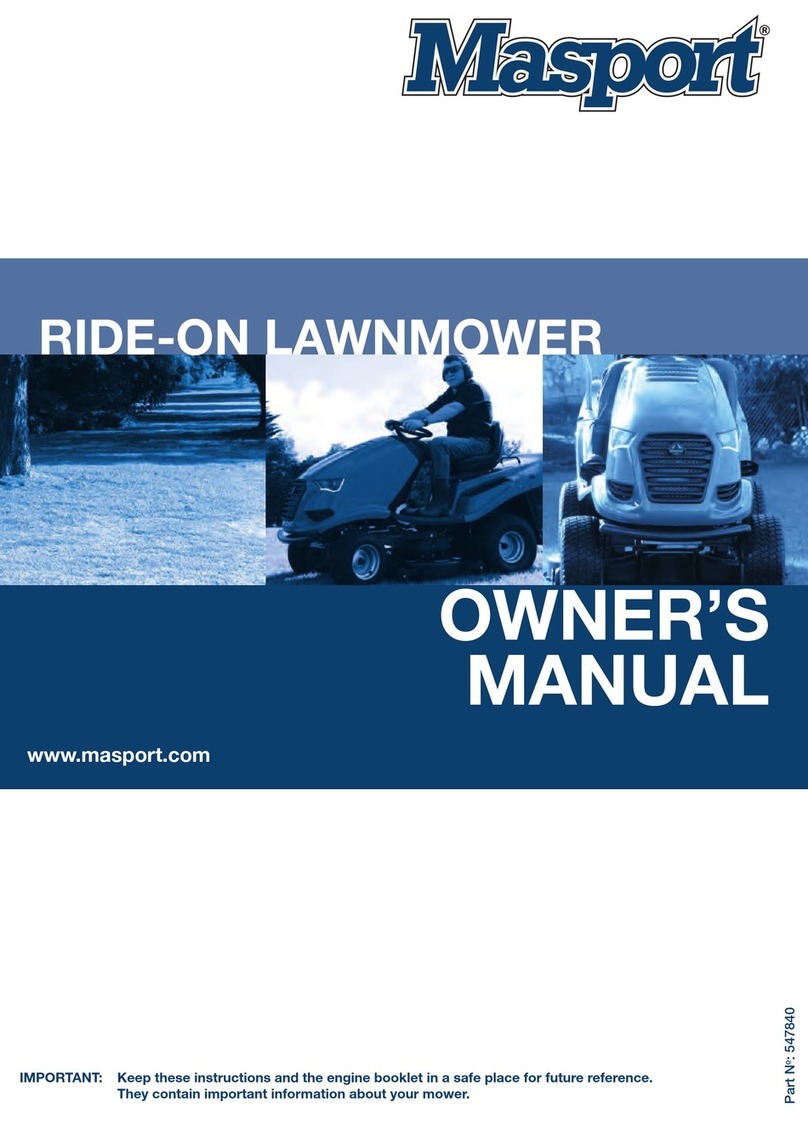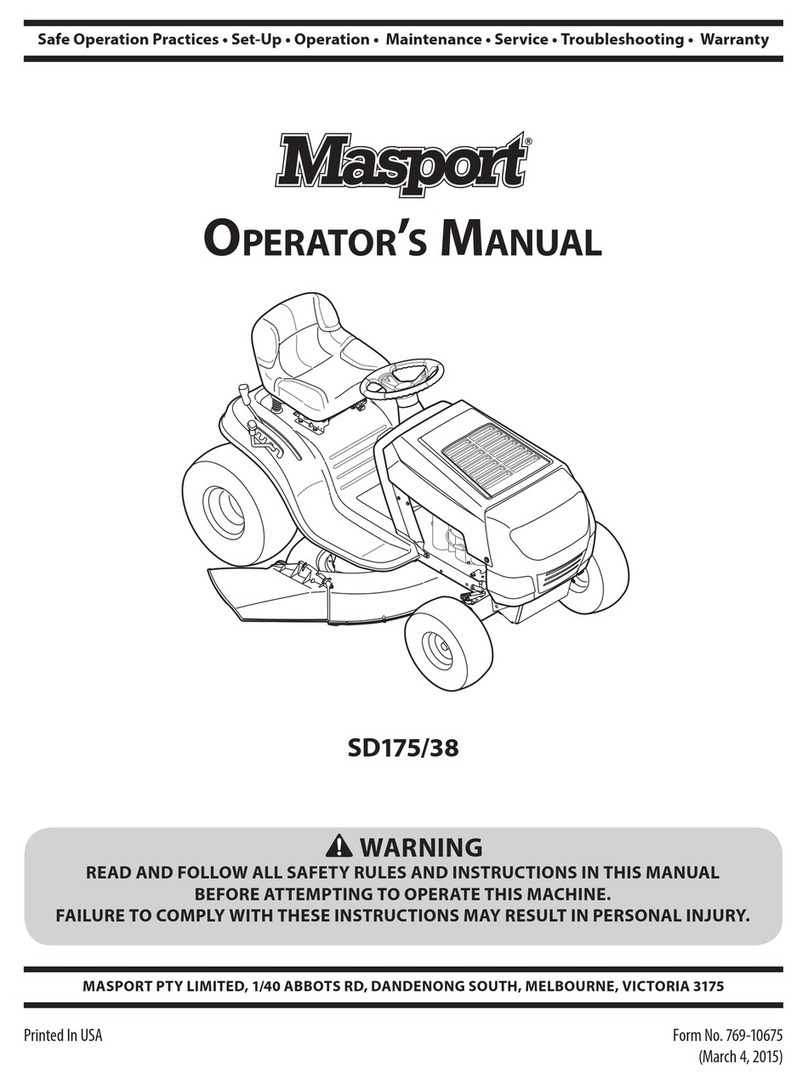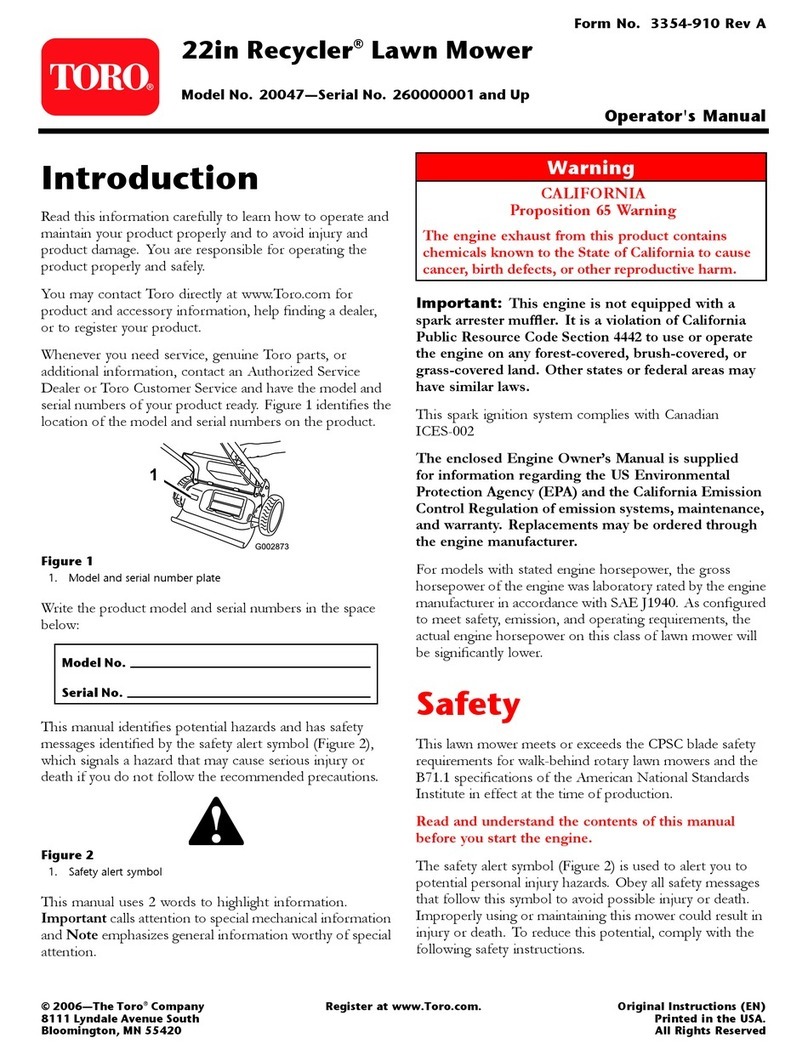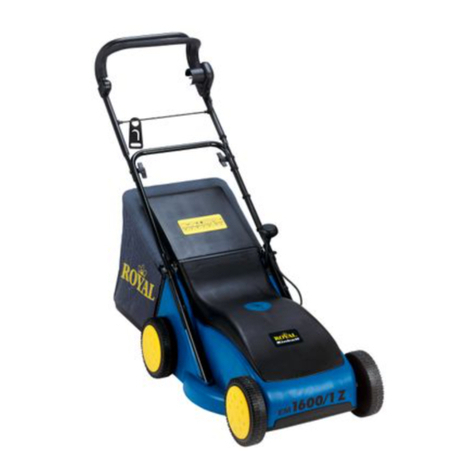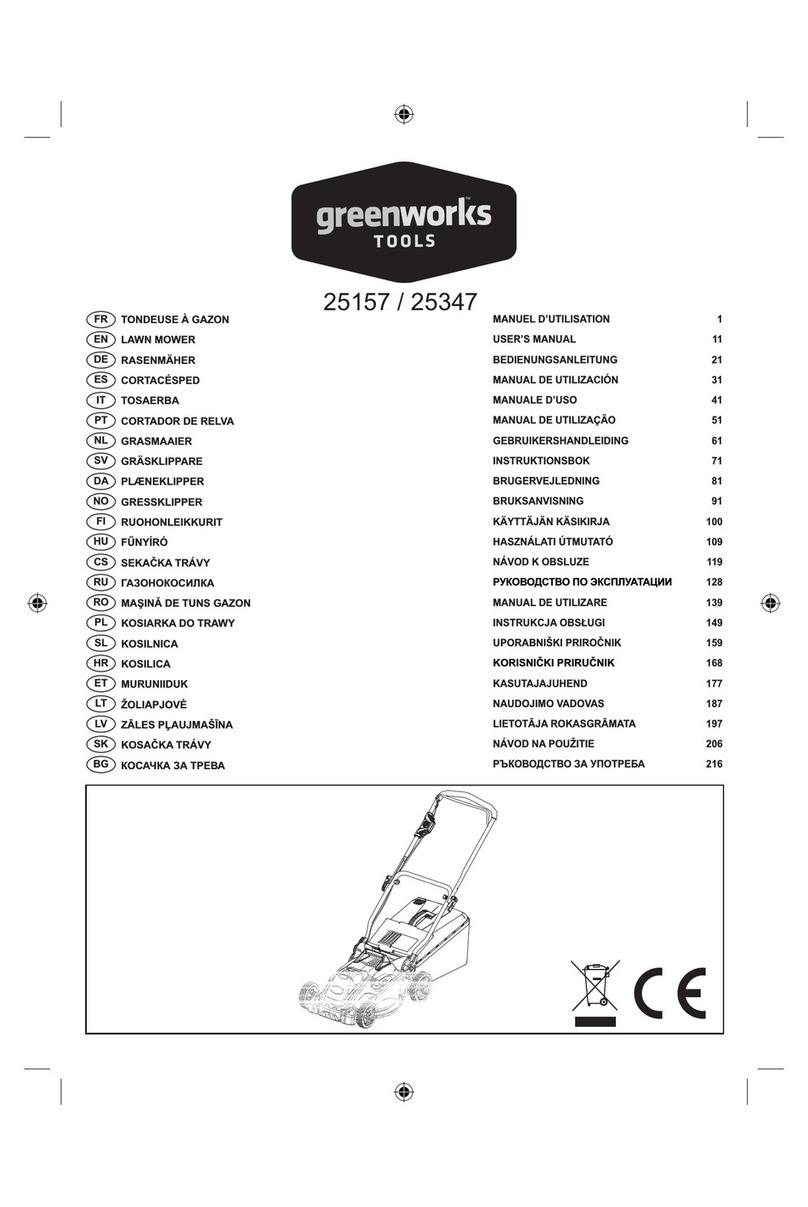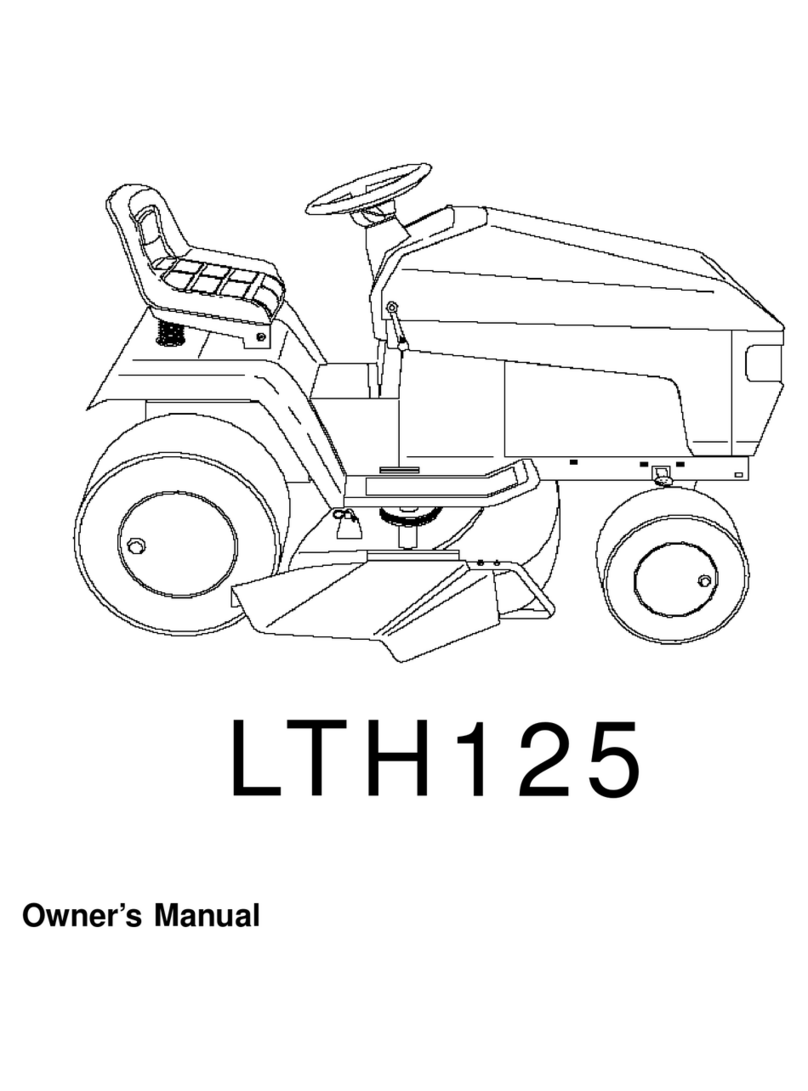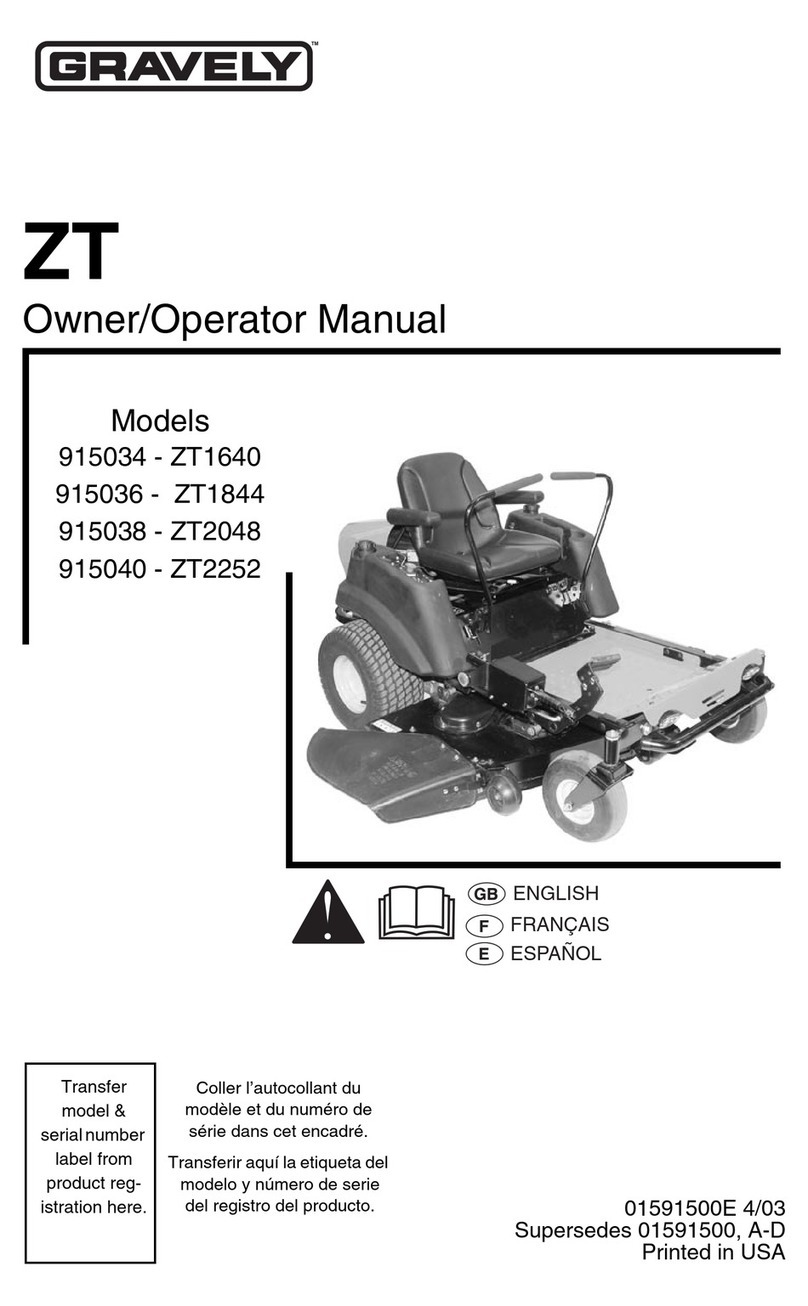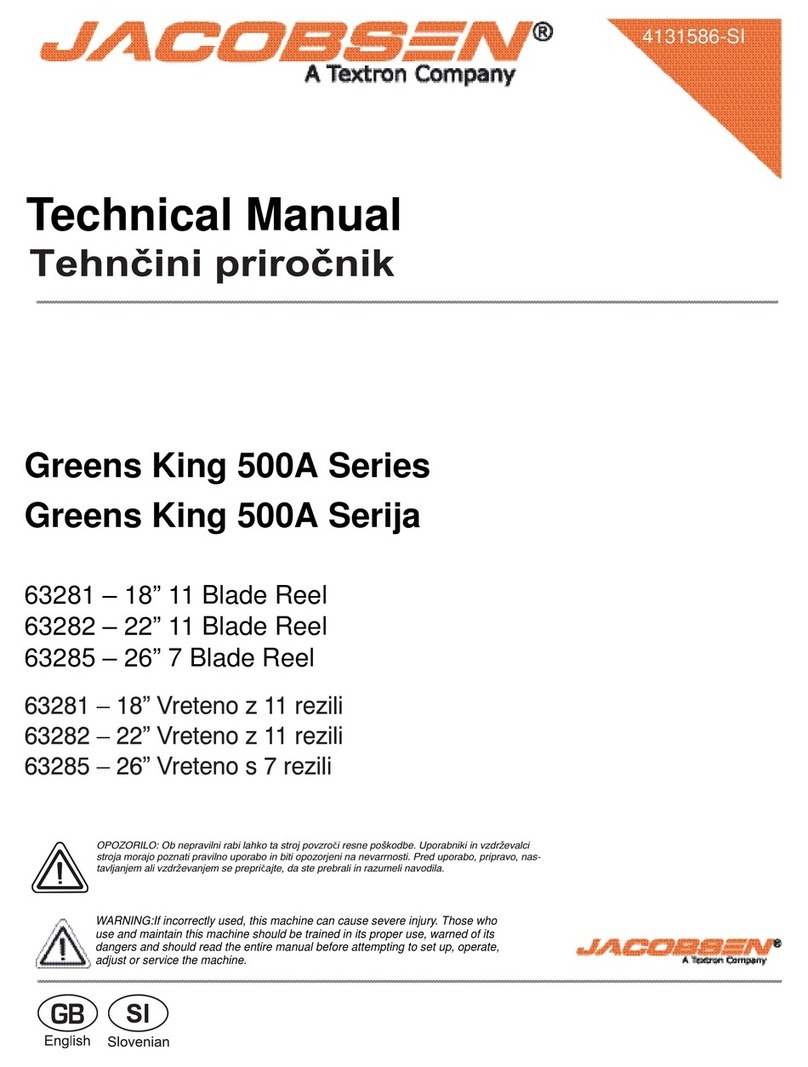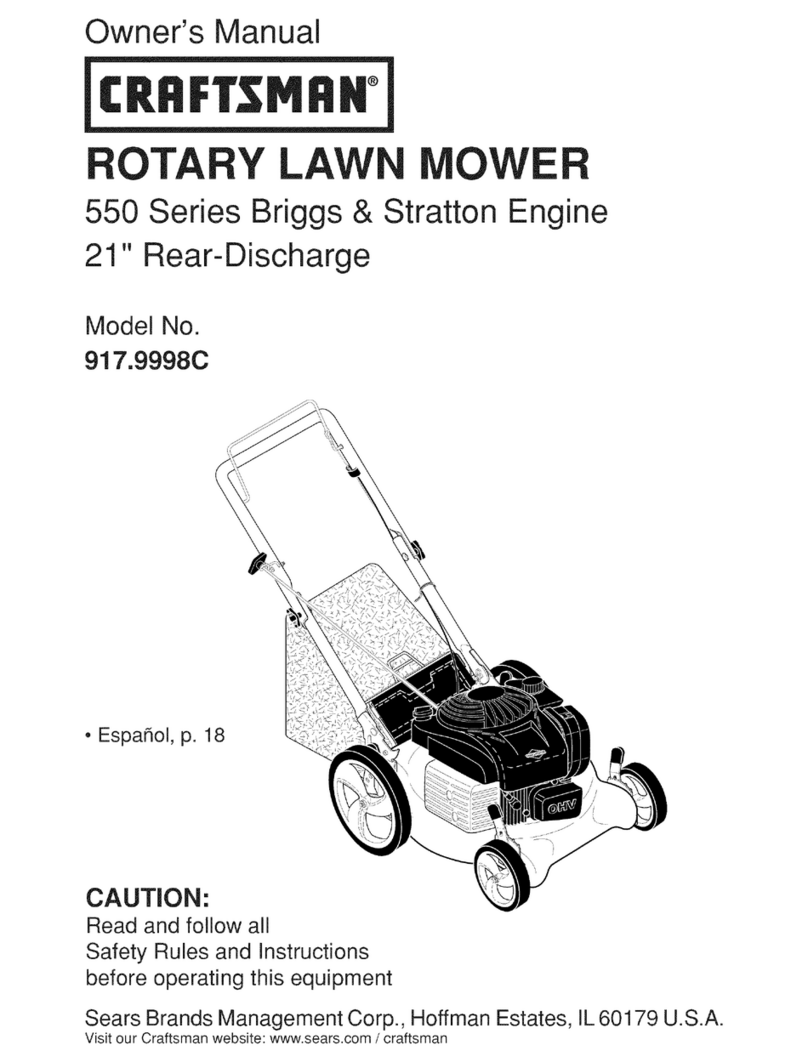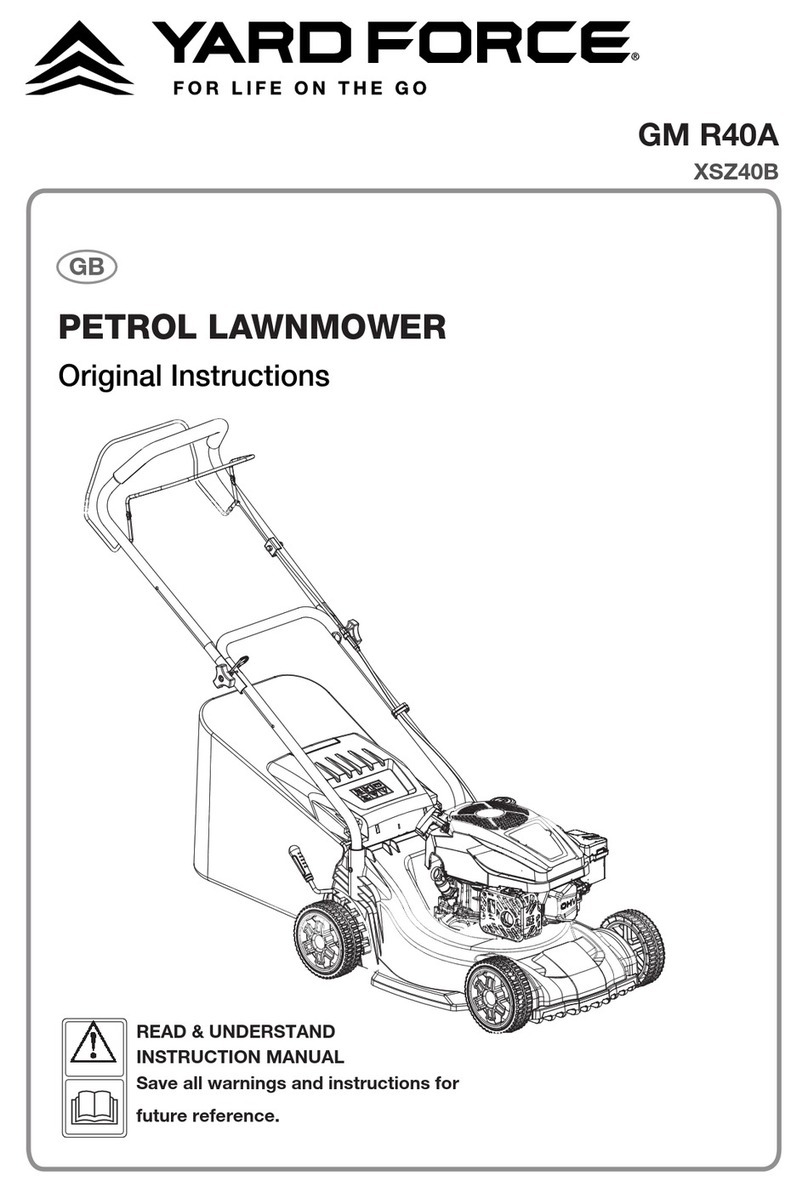3
NOTE:- All positional descriptions such as left, right, front, rear,
above and below refer to those places as seen by the operator
when standing behind the handle of the mower in its normal
grass-cutting orientation. Please note that these instructions
are to be read in conjunction with the Owner’s Manual for the
mower and the Engine Manufacturer’s Operator’s Manual for
the engine.
Controls
ENGINE CONTROLS
Some engines have a throttle control to allow the engine speed to be
varied as desired. Usually this control can be used also to stop the
engine, but, for some markets mowers are fitted with an Operator
Presence Control (OPC) that allows the engine to run only while the
OPC bail (a bar or hand-grips in front of the handle crossbar) is held
against the handle. If the operator releases the bail, the engine stops
immediately and the blade is braked to a stop.
Throttle Control Adjustment
Move the throttle control lever through its full range of travel.
This will move the lever on the carburetor from the “FAST” position
(when the wire is fully extended), to the ‘STOP’ position (when the
wire is fully retracted).
If the engine is hard to start when cold, (and it does not have an
automatic choke), slacken off the cable clamp screw and slide the
cable outer sleeve forward a few millimetres. Tighten the clamp
screw again. On the other hand, if the engine does not stop when
the control lever is moved to the ‘STOP’ position, slacken the clamp
screw and slide the cable sleeve back a few millimetres. (Note:
Mowers with an OPC bail stop the engine using a different switch. See
OPC control adjustment, below). When the cable sleeve is positioned
correctly, the functions at both ends of the throttle wire travel should
both work correctly.
Throttle Control Replacement
If the control is one of the types A, C and D shown on the previous
page, simply detach the control box from the handle, note where the
cable ties are fitted and cut them. After releasing the clamp screw
on the carburetor, the new cable can be fitted and held in place with
new cable ties. Clamp the control box onto the handle, refit the clamp
screw and adjust the cable position as detailed above.
To gain access to the control box for type B throttle controls (as fitted
to MSV models), remove the four screws from under the throttle
mount that hold the two halves of the mount onto the handle. The
top throttle mount can then be lifted clear of the handle. Remove the
M6x60 screw that fixes the control box to the top mount, note the
cable tie positions and cut the cable ties. After the clamp screw on
the carburetor has been removed, the throttle wire can be disengaged
from the carburetor lever. The old control box can then be withdrawn
from the top mount. Reverse this procedure to fit the new throttle
control. Take great care not to over-tighten the M6x60 screw that
holds the control box to the top mount as this would make movement
of the throttle lever very stiff. After fitting the cable wire into the
carburetor lever, re-assemble the two halves of the throttle mount
onto the handle, fit new cable ties, replace the clamp screw and
adjust the cable position as described above to give correct operation
of the engine.
OPC Control Adjustment
There are no adjustments provided on this control as it is a safety
feature that might then be over-ridden. When the OPC bail (see the
illustrations above) is held against the handle, the engine ignition can
function and the mower can be started. When the bail is released,
the primary winding of the ignition coil is shorted out, thus quenching
the ignition spark. At the same time, a brake pad contacts the engine
flywheel, bringing the blade to a rapid stop. If the OPC bail has
been damaged and twisted out of shape, the bail may contact the
handle before the ignition has been ‘switched on’. This is rare, but
straightening of the bail can provide a little extra control wire travel to
correct the fault.
PROPULSION CONTROLS
Drive Clutch
The mower drive system is engaged by using the SP (Self Propulsion)
bail. See the illustrations on page 2. Lifting the SP bail, until it contacts
the handle, operates the clutch inside the gearbox. The clutch
is designed to be fully engaged or fully released. Any attempt to
reduce travel speed by only partially engaging the clutch will lead to
overheating of the gearbox. This will cause serious damage. For this
reason, it is important that the SP bail cable is adjusted to the correct
length to provide the necessary clutch engagement pressure.

